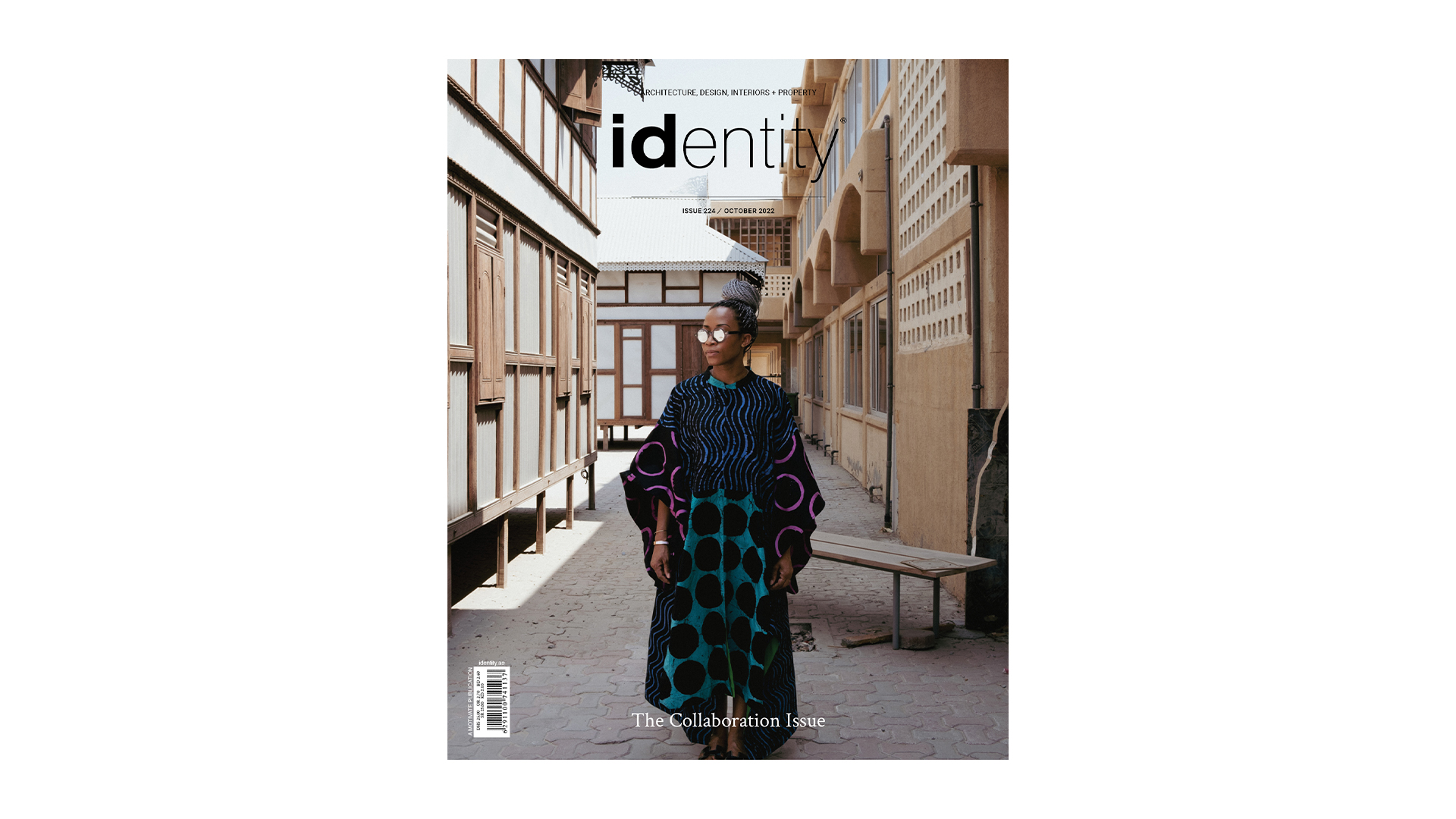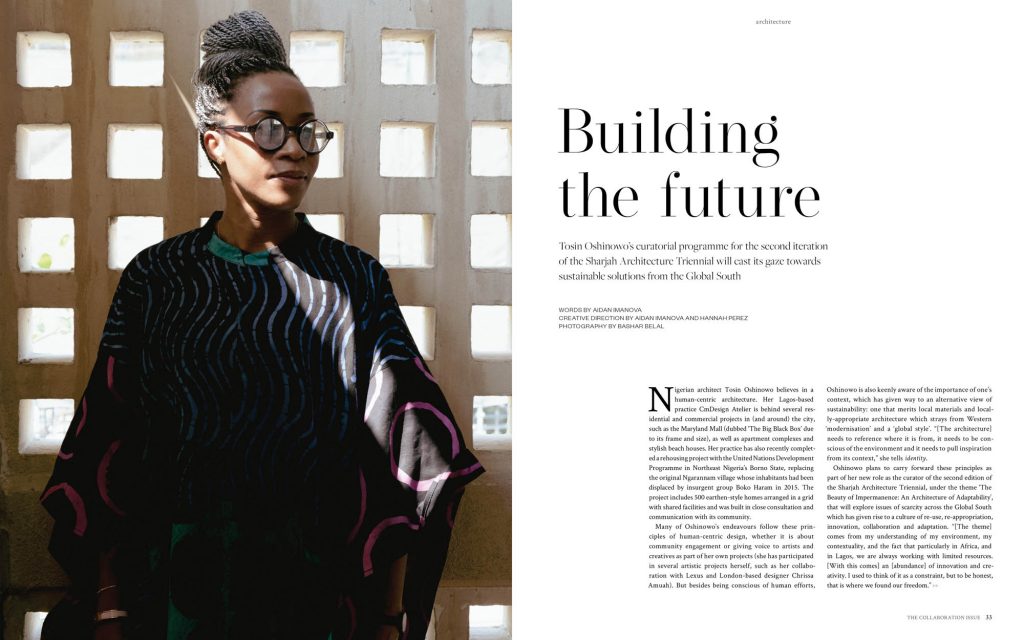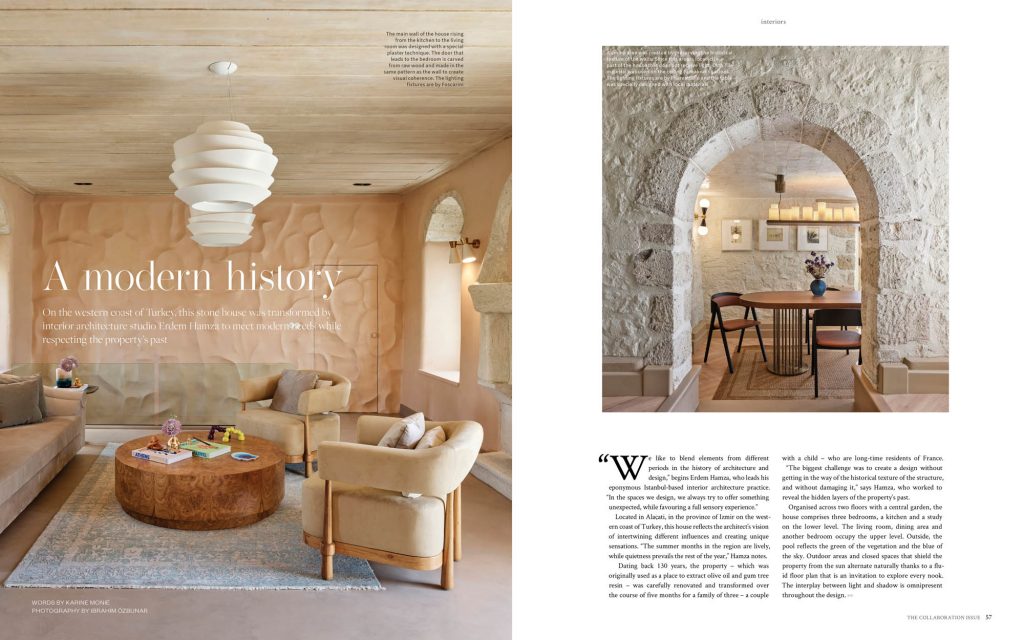Copyright © 2025 Motivate Media Group. All rights reserved.
Read ‘The Collaboration Issue’ – Note from the editor
Read identity's October 2022 issue on ISSUU or grab your copy!

It’s strange to think that I’ve been writing about architecture for over a decade now and, in some ways, it feels like nothing has really changed when, actually, a lot has changed: both in the world and within the architectural discipline. For one, the angle has shifted from disproportionately focusing on an ego-driven ‘starchitect’ narrative (which was largely driven by the media) to one that casts a wider global net. This is not to invalidate some of the truly groundbreaking works of these starchitects, but it does make one reconsider whether the focus of the architectural field had been evenly distributed. Especially if we are going to be tackling the global issues that we are faced with today, we are going to need a wider worldview – and a strong willingness for collaboration.

While the Global North has historically embraced a more individualistic approach, societies in the Global South are predominantly community-driven – which naturally lends itself to a more collaborative approach. The second edition of the Sharjah Architecture Triennial will set its sights on this part of the world and examine how practices can tackle today’s issues outside of the more global, Western canon. The exhibition is being curated by Nigerian architect Tosin Oshinowo, who is featured on this month’s cover. “There is a lot more inclusivity now [in the architectural field]; it is very encouraging, and I am optimistic that we are going to carry on in this direction,” she told me during our interview. Championing a multidisciplinary approach, Oshinowo hopes to engage product and industrial designers, architects, researchers and urbanists from across the Global South, hoping to bring to the foreground unfamiliar names from their respective fields for an alternative way of ‘doing things’. “The point is that we inclusively look for solutions that are not always from [within] the sector,” she said.

And while taking on the curator role is a prestigious and highly important endeavour, Oshinowo kept it real by admitting that she may not possess all the tools to bring the kind of diverse and wide-ranging conversation that she’d like if she were to solely stick to her own knowledge of the region. For that reason, she appointed an advisory board of international experts from the fields of art, design and architecture to help guide the exhibition. And for me, that is an important lesson to learn: which is that it is OK to admit that we don’t know everything – even within a professional environment. And this is exactly where the beauty of collaboration is so apt – it brings together different forms of knowledge and expertise for a greater cause, while focusing on togetherness as a pillar for progress. It is a theme I am always encouraged to explore – in this issue and the ones that came before and those that will, I hope, come after.

The Latest
Turkish furniture house BYKEPI opens its first flagship in Dubai
Located in the Art of Living, the new BYKEPI store adds to the brand's international expansion.
Yla launches Audace – where metal transforms into sculptural elegance
The UAE-based luxury furniture atelier reimagines the role of metal in interior design through its inaugural collection.
Step inside Al Huzaifa Design Studio’s latest project
The studio has announced the completion of a bespoke holiday villa project in Fujairah.
Soulful Sanctuary
We take you inside a British design duo’s Tulum vacation home
A Sculptural Ode to the Sea
Designed by Killa Design, this bold architectural statement captures the spirit of superyachts and sustainability, and the evolution of Dubai’s coastline
Elevate Your Reading Space
Assouline’s new objects and home fragrances collection are an ideal complement to your reading rituals
All Aboard
What it will be like aboard the world’s largest residential yacht, the ULYSSIA?
Inside The Charleston
A tribute to Galle Fort’s complex heritage, The Charleston blends Art Deco elegance with Sri Lankan artistry and Bawa-infused modernism
Design Take: Buddha Bar
We unveil the story behind the iconic design of the much-loved Buddha Bar in Grosvenor House.
A Layered Narrative
An Edwardian home in London becomes a serene gallery of culture, craft and contemporary design
A Brand Symphony
Kader Mithani, CEO of Casamia, and Gian Luca Gessi, CEO of Gessi, reflect on the partnership between the two brands
The Art of Wellness
Kintsugi in Abu Dhabi, situated in a seven-storey villa, offers the ultimate zen retreat
















